I'll usually "refresh" a pot before it goes outside, but not to the extent that Al has shown. What you see in the image above is only the first step of a full repot. I provided the images only to illustrate the point at which you can be sure root congestion is taking a toll on the plant's vitality/ growth rate/ defenses.
I'll show a repotting sequence so you can see the steps:
Dormant rough bark maple:

After pruning & wiring for shape:
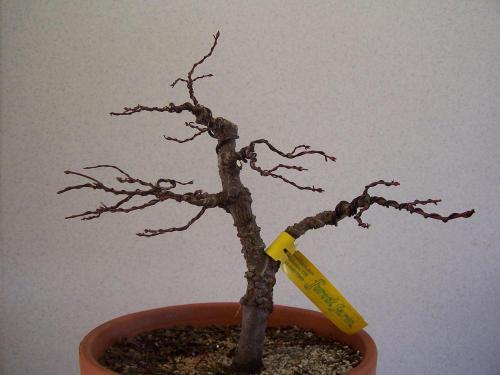
Bottom 2/3 of the root mass removed with a pruning saw:
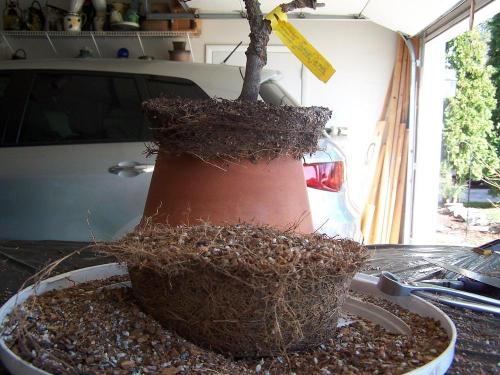
Now, I'll tease the rest of the soil away from the roots:
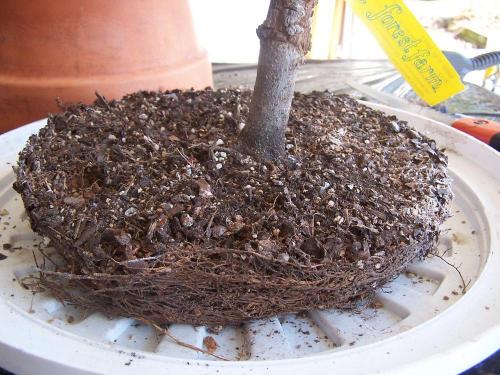
Root work finished:
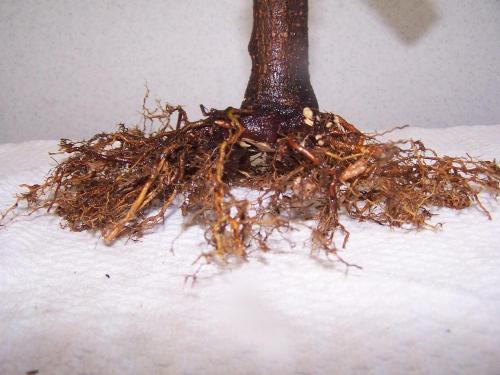
View from the bottom:
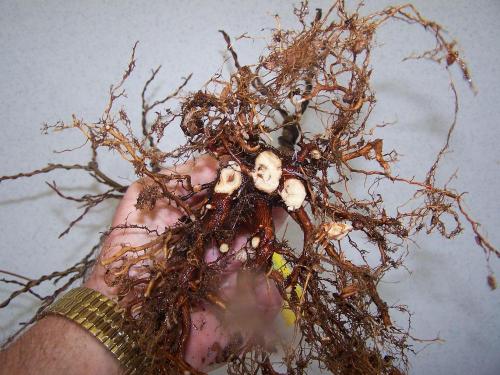
Settled in it's new pot, which happens to be the old pot.
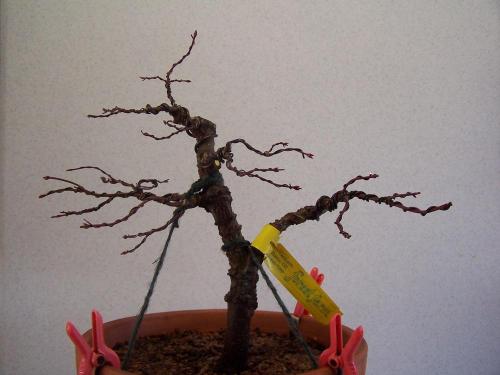
Because an attractive appearance of the roots and trunk flare are a key element of realistic and old-looking bonsai.

The way I treat roots is much more severe than necessary for plants not grown as bonsai.
The stress/ limitations imposed by root congestion is the same for all plants in a container, whether it's a bonsai, tree grown as a houseplant, or trees which live outdoors in containers. They all need relief from increasing root congestion to realize as much of their genetic potential as possible.
I'm not sure how deep you want to dive into information re repotting (as opposed to potting up) at this time, but at some point before you dive into it, ask about how to ensure the process goes smoothly. The first repot on a tree that is severely rootbound is always the hardest. From that point forward, they get easier.
I've used a bloom booster. It's so seductive to think a bit of fertilizer will give me incredible blooms, knowing in the back of my head it's it's probably just hyped up advertising. Here is part of a conversation I had with Dave Neal from Dyna-Gro:
You are correct. We market a high P (Liquid Bloom) "believe" they need this. As you have noted, our Foliage-Pro does a great job start to finish. However, it is simpler to give the market what they think they need than to try to reeducate it. There is some evidence to believe that low N helps to convince a plant to stop its vegetative growth and move into its reproductive phase (flowering), but environmental factors are probably more important. P is typically 5th or 6th in order of importance of the six macronutrients. There is little scientific justification for higher P formulas, but marketing does come into play for the vast majority of users who lack any real understanding of plant nutritional requirements. Therefore, the market is flooded with a plethora of snake oil products that provide little benefit and can actually do harm. For example, one exhibitor at a hydroponic trade show had a calcium supplement with 2% calcium derived from calcium chloride. Can you guess what continued application of 2% chloride would do to plants?'
I hope this answers your question and am sorry for Zina's inaccurate response.
Cordially,
Dave Neal, CEO
Dyna-Gro Nutrition Solutions
2775 Giant Rd.
Richmond, CA 94806
.... how often do you fertilize your pots? In summer, I try to fertilize weekly when temperatures allow. In winter while plants are indoors under lights, I fertilize at a low dose every time I water. The reason is, I have over 100 plants growing on 2-32 sq ft tables ant they all have collection saucers, so I cannot flush the soil thoroughly enough to allow weekly (or every other week) at higher rates. If you're confused about how this works, just ask.
In my gardens, I rarely use fertilizer. Same here, except in my raised beds with a high % of OM, which gives me trouble with N immobilization, so I supplement with 27-0-3
Good soil and compost have always done the trick. Amen
One more question; pot size? Does "bigger is better" apply? You must pay attention to what your grow medium allows, or pay the over-watering tax. Bigger is much better IF you can water correctly (to beyond the point of complete saturation, so at least 20% of the total volume of water applied exits the drain hole) without your grow medium holding too much water for long periods, thereby limiting root function or jeopardizing root health via fungal infections/ root rot. I use media I make myself, and they don't impose any limitations on what size pot I can grow in. Still, I don't use unnecessarily large pots because I repot usually every year or every other.
The castor bean is beautiful. Thank you.
.... never thought of overwintering them. Do they go dormant like the brugs? They should be able to be treated exactly the same, but if you can grow a plant as large as the ones in the image in a single summer, why bother? :-)
@sallyg Strong work - getting such a bloom profusion!
Al







